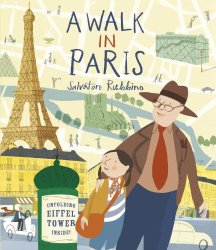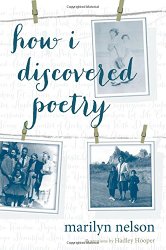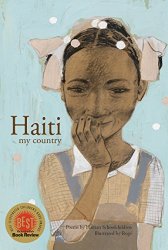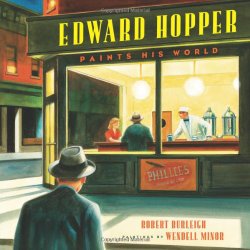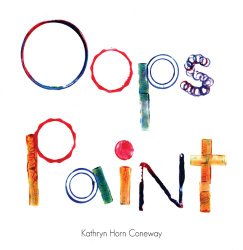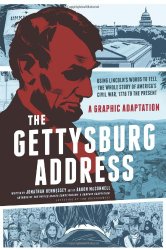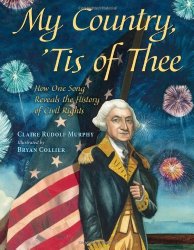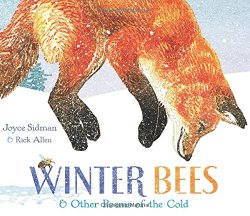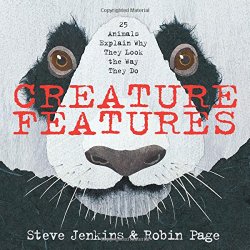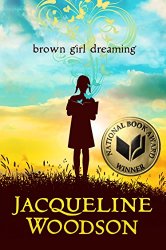 Brown Girl Dreaming
Brown Girl Dreaming
by Jacqueline Woodson
Nancy Paulsen Books (Penguin), 2014. 337 pages.
Starred Review
2014 National Book Award winner for Young People’s Literature
2014 Sonderbooks Stand-out: #2, Children’s Nonfiction
2014 Cybils Finalist, Poetry
Brown Girl Dreaming is a memoir in verse. It’s lovely, and I hope children will find it in the nonfiction shelves of our library.
Jacqueline Woodson writes evocatively of her childhood, in Ohio, then South Carolina, then New York City. She wanted to be a writer even when she was a child, and catches that dream. She writes about being a Jehovah’s Witness, and about her family, about her best friend (who is still her best friend), and about how South Carolina and New York City were so different from each other.
I like the way each poem tells about a particular incident, but taken together they give a picture of her life. They are also told in different styles, focusing on different things – family, places, growing, writing.
There’s a series of haiku sprinkled throughout, all titled “how to listen.” Here is “how to listen #9”:
Under the back porch
there’s an alone place I go
writing all I’ve heard.
I’ll include some poems I enjoyed.
a girl named jack
Good enough name for me, my father said
the day I was born.
Don’t see why
she can’t have it, too.
But the women said no.
My mother first.
Then each aunt, pulling my pink blanket back
patting the crop of thick curls
tugging at my new toes
touching my cheeks.
We won’t have a girl named Jack, my mother said.
And my father’s sisters whispered,
A boy named Jack was bad enough.
But only so my mother could hear.
Name a girl Jack, my father said,
and she can’t help but grow up strong.
Raise her right, my father said,
and she’ll make that name her own.
Name a girl Jack
and people will look at her twice, my father said.
For no good reason but to ask if her parents
were crazy, my mother said.
And back and forth it went until I was Jackie
and my father left the hospital mad.
My mother said to my aunts,
Hand me that pen, wrote
Jacqueline where it asked for a name.
Jacqueline, just in case someone thought to drop the ie.
Jacqueline, just in case
I grew up and wanted something a little bit longer
and further away from
Jack.
Here’s a story about her sister:
the reader
When we can’t find my sister, we know
she is under the kitchen table, a book in her hand,
a glass of milk and a small bowl of peanuts beside her.
We know we can call Odella’s name out loud,
slap the table hard with our hands,
dance around it singing
“She’ll Be Coming ‘Round the Mountain”
so many times the song makes us sick
and the circling makes us dizzy
and still
my sister will do nothing more
than slowly turn the page.
Later, there’s more about her sister:
gifted
Everyone knows my sister
is brilliant. The letters come home folded neatly
inside official-looking envelopes that my sister proudly
hands over to my mother.
Odella has achieved
Odella has excelled at
Odella has been recommended to
Odella’s outstanding performance in
She is gifted
we are told.
And I imagine presents surrounding her.
I am not gifted. When I read, the words twist
twirl across the page.
When they settle, it is too late.
The class has already moved on.
I want to catch words one day. I want to hold them
then blow gently,
watch them float
right out of my hands.
This one’s a nice family poem:
harvest time
When Daddy’s garden is ready
it is filled with words that make me laugh when I say them –
pole beans and tomatoes, okra and corn
sweet peas and sugar snaps,
lettuce and squash.
Who could have imagined
so much color that the ground disappears
and we are left
walking through an autumn’s worth
of crazy words
that beneath the magic
of my grandmother’s hands
become
side dishes.
And perhaps my favorite is about Jacqueline deciding she’s going to be a writer:
when i tell my family
When I tell my family
I want to be a writer, they smile and say,
We see you in the backyard with your writing.
They say,
We hear you making up all those stories.
And,
We used to write poems.
And,
It’s a good hobby, we see how quiet it keeps you.
They say,
But maybe you should be a teacher,
a lawyer,
do hair . . .
I’ll think about it, I say.
And maybe all of us know
this is just another one of my
stories.
The whole book gives a flavor of love and family and a girl listening to the world around her. Indeed, it’s the story of a brown girl dreaming.
jacquelinewoodson.com
Buy from Amazon.com
Find this review on Sonderbooks at: www.sonderbooks.com/Childrens_Nonfiction/brown_girl_dreaming.html
Disclosure: I am an Amazon Affiliate, and will earn a small percentage if you order a book on Amazon after clicking through from my site.
Source: This review is based on a library book from Fairfax County Public Library.
Disclaimer: I am a professional librarian, but I maintain my website and blogs on my own time. The views expressed are solely my own, and in no way represent the official views of my employer or of any committee or group of which I am part.
Please use the comments if you’ve read the book and want to discuss spoilers!
